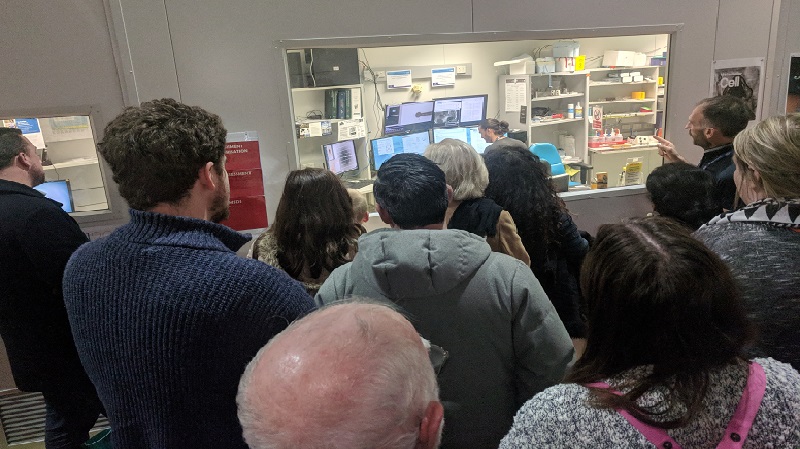
- This event has passed.
Behind the scenes at the Australian Synchrotron
20 June 2018 @ 3:30 pm – 7:00 pm

Opening in 2007 at its site in Clayton, Victoria, the Australian Synchrotron is Australia’s largest and arguably most successful scientific user facility, benefitting over 3000 researchers from academia, medical research institutes, government and other research organisations, and industry.
In simple terms, a synchrotron is a very large, circular, megavoltage machine about the size of a football field. From outside, the Australian Synchrotron, for example, looks very much like a roofed football stadium. But on the inside, it’s very different. Instead of grass and seating, there is a vast, circular network of interconnecting tunnels and high tech apparatus.
Synchrotrons use electricity to produce intense beams of light a million times brighter than the sun. The light is produced when high-energy electrons are forced to travel in a circular orbit inside the synchrotron tunnels by ‘synchronised’ application of strong magnetic fields.
The electron beams travel at just under the speed of light – about 299,792 kilometres per second. The intense light they produce is filtered and adjusted to travel into experimental workstations, where the light reveals the innermost, sub-microscopic secrets of materials under investigation, from human tissue to plants to metals and more.
With this new knowledge that synchrotron science provides about the molecular structure of materials, researchers can invent ways to tackle diseases, make plants more productive and metals more resilient – among many other beneficial applications of synchrotron science.
Transport
A bus departing from and returning to the Royal Society of Victoria (8 LaTrobe St, Melbourne) will be available to transport people to and from the Synchrotron. Please indicate when registering as to whether you will be joining us at the Society from 3.30pm or on-site from 4.30pm.
Acknowledgement
Sponsored by Inspiring Australia, in partnership with the Convergence Science Network and the Royal Society of Victoria.
